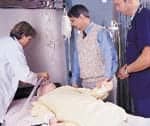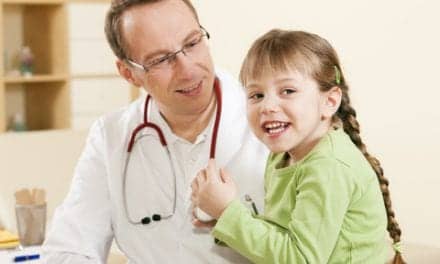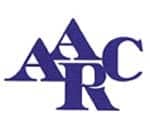Early to Bed: The Minnesota Regional Sleep Disorders Center

In the late 1970s, Americans who had difficulties getting a good night’s sleep had very few places to turn to for expert help. In California, the sleep clinic at Stanford University saw patients with sleep disorders. In New York City, Montefiore Hospital was the place to go. Another sleep center that helped define this medical specialty in its early days was located midway between these facilities—the Minnesota Regional Sleep Disorders Center (MRSDC) at Hennepin County Medical Center (HCMC), in downtown Minneapolis.
Sleep apnea, narcolepsy, and insomnia were hardly new disorders, according to Mark Mahowald, MD, MRSDC’s director, past president of the American Academy of Sleep Medicine, and a professor in the Department of Neurology at the University of Minnesota Medical School. But until the 1970s, they were largely ignored.

“Dr Milton Ettinger established MRSDC in 1978,” Mahowald says. “At the time, he and I were seeing a number of patients who had sleep complaints. I ran the studies myself and had to make the monitoring equipment in my own basement, because it wasn’t commercially available. We had to train all our own technologists. When we first got started, CPAP (continuous positive airway pressure) hadn’t even been discovered or invented.”
Now, of course, there are more than 500 sleep centers across the United States. A quarter of a century later, MRSDC is still going strong, as a clinical, research, and educational facility. Every year it sees about 2,000 patients and provides more than 50 medical students with clinical sleep medicine rotations. The sleep center also trains fellows in sleep medicine. MRSDC has a large multidisciplinary staff, including physicians (pulmonologists, neurologists, psychiatrists, pediatricians), about 20 technologists, secretaries, and nurses. Three of the EEG technologists were licensed physicians in their home countries. There are three full-time RTs on staff.
“The major groups of patients that we see are excessively sleepy during the day, or have insomnia, biological clock abnormalities, or parasomnias,” explains Mahowald. “The majority of people who have excessive daytime sleepiness will undergo formal sleep studies and will be found to have either obstructive sleep apnea or narcolepsy. If they have obstructive sleep apnea, they are typically treated with nasal CPAP. If they have narcolepsy, they typically are treated with stimulant medication. Patients with insomnia typically do not have formal sleep studies. But we will have them complete sleep diaries, and often have them undergo 3 weeks of actigraphy, which is a movement monitoring device that gives an at-a-glance picture of the wake-sleep cycle.
“I think our primary commitment, in addition to patient care, is education, both lay and professional, and ongoing research to discover new sleep disorders and treatments for existing ones,” he says. For example, MRSDC is participating in the Sleep Heart Health Study (SHHS) of the National Institutes of Health.
Sleep Apnea-Hypertension Link
Leading the SHHS at MRSDC is Conrad Iber, MD, an associate professor of medicine at the University of Minnesota, director of pulmonary and critical care at HCMC, and president-elect of the American Academy of Sleep Medicine. MRSDC is one of six centers participating in the 10-year longitudinal study. Well over 6,000 subjects have participated—random populations that represent the general public. The study comes to a conclusion in 2004.
The purpose of SHHS, explains Iber, is to determine the risk of cardiovascular disease, relative to sleep apnea, in the general public. “Here we’re seeing the intersection of two very common diseases. We found that the higher the intensity of sleep apnea, the more likely [the subjects] were to have high blood pressure. And so it appeared that [sleep apnea] was a contributing factor to the development of high blood pressure. With this kind of study, to be honest with you, it’s very hard to ever completely prove cause and effect.”
SHHS is also looking at the intensity and severity of sleep apnea and the increased risk of having congestive heart failure, strokes, and, to some extent, coronary artery disease. “We would anticipate a similar outcome,” Iber says, “but we don’t yet have that data. Ultimately, this research in cardiovascular disease will be a tremendous service to the population.”
As for the mechanism that would cause these kinds of effects, Iber notes a significant amount of research that shows adrenaline is a link between sleep apnea and high blood pressure. It is very clear that people who have sleep apnea have much more adrenaline in their body.
“Although there is some conflicting literature—some showing effect and some that don’t show effect—most of the studies show that treatment with CPAP, if it won’t eliminate high blood pressure, will make it better,” says Iber. “We don’t yet have studies that prove that sleep apnea treatment with CPAP makes people live longer.”
Further Activities at MRSDC
Other research has played an important role at MRSDC, as well. For example, MRSDC’s Carlos Schenck, MD, discovered the condition called REM sleep behavior disorder. The sleep center has done a lot of work defining some of the other parasomnias—that is, abnormal behavior that occurs around the time of sleep. Those would include head banging in children, seizures at night, sleepwalking, sleep terrors, and even forensic activities, during which people have committed crimes. It is also doing research in sleep apnea, insomnia, and restless leg syndrome.
Among areas of purely clinical interest, MRSDC is a key referral resource for the Upper Midwest. “We are a sleep center for the region that accepts patients who have very unusual sleep problems,” says Iber. “We are, in a sense, not so much a first-line sleep center as a referral center for patients who have unusual sleep problems that have stumped other clinicians.”
Mahowald has been in the forefront in trying to help adolescents with what is called delayed sleep phase syndrome—they wake up later and go to bed later than is compatible with traditional school hours. The syndrome conflicts with school schedules and is a major risk factor in automobile accidents involving these youth. As a result of Mahowald’s effort, two large school systems in the Twin Cities area changed school start times.
MRSDC: An RT’s Perspective
“Because we’re part of a teaching institution,” says Rebecca Forss, RRT, RPSGT, who has been at MRSDC for 11 years, “we see an incredible variety of people and disease conditions and sleep disorders—some of them very rare. Most sleep centers would never see them. It’s a constant learning process. There’s always something new going on.
“We see some unusual, very intricate parasomnias. That’s something our sleep center is known for.”
Forss and her colleagues deal with small populations on a daily basis—six to 10 patients per shift, versus the 20 or 30 she might see in a regular clinical setting. She has more time to get to know her patients, which is quite a luxury in today’s managed care world.
Forss enjoys the ability to make a big difference in a patient’s life—sometimes in just 1 night. “They come in very sick,” says Forss. “They’re not oxygenating very well. They’re not ventilating well. During the night we’ll apply CPAP or bilevel. We use a mask that fits over the nose, or sometimes the nose and mouth. And we blow pressurized air down into the windpipe that helps hold the windpipe open. Sometimes that’s all a person needs. When people have a problem ventilating, maybe they have weak respiratory muscles or they have a restrictive lung disease. With our bilevel airway pressure, we can set two airway pressures to help the patient breathe. When we find the correct pressure level, they’ll sleep for hours on end, not even twitch a muscle, and they wake up very refreshed.”
As interesting as the work may be, Forss notes that the staffing problems at institutions that provide respiratory therapy apply at MRSDC, as well. She and her two fellow RTs represent half the RT staffing MRSDC would ideally like to have, despite active recruiting efforts. A lack of trained respiratory therapists and EEG technologists going into the sleep therapy field is due, in her view, to a paucity of training programs available for sleep therapists, added to the general shortage of trained RTs. Often, RTs who go into sleep therapy for the first time receive on-the-job training in their new positions.
“Generally, the range of care we provide in the sleep lab is not as wide as a traditional respiratory therapist would provide,” says Forss. “Traditional respiratory therapists work with ventilators. They’re working with different types of breathing therapies. They’re all over the hospital, drawing blood gasses and going to codes.
“Here in the sleep lab, we’re just in the lab. Once in a while, we’ll do a blood gas. We’ll do nebulizer treatments for patients who have asthma or a bronchospasm. Those, and administering oxygen, are the only things we have in common with a traditional respiratory therapist.”
Forss and her colleagues use oximeters and transcutaneous CO2 monitors. The primary monitoring system is, of course, a polysomnograph—a computer-based system that records brainwave patterns, respiratory patterns, EMG signals, and ECG signals.
“We watch patients sleep. We’re looking to see if they have arousals from sleep and what causes them,” says Forss. “Sometimes, they’re respiratory, sometimes they’re not. If they’re respiratory events noted after about 2 or 3 hours, we’ll come in and [start CPAP]. The rest of the night we would titrate or find the correct pressure levels, so that the patient maintains oxygenation and sleep continuity.”
Forss says that the work often brings instant gratification for her. “Probably the biggest thing is how quickly we help people. It can happen in 1 night’s time—we’ve diagnosed their problem and put them on a course of treatment. We send them out feeling much better than when they came in. It can be a life-changing experience for them.”
D.R. Martin and Susan Wichmann are Minneapolis-based medical writers.










